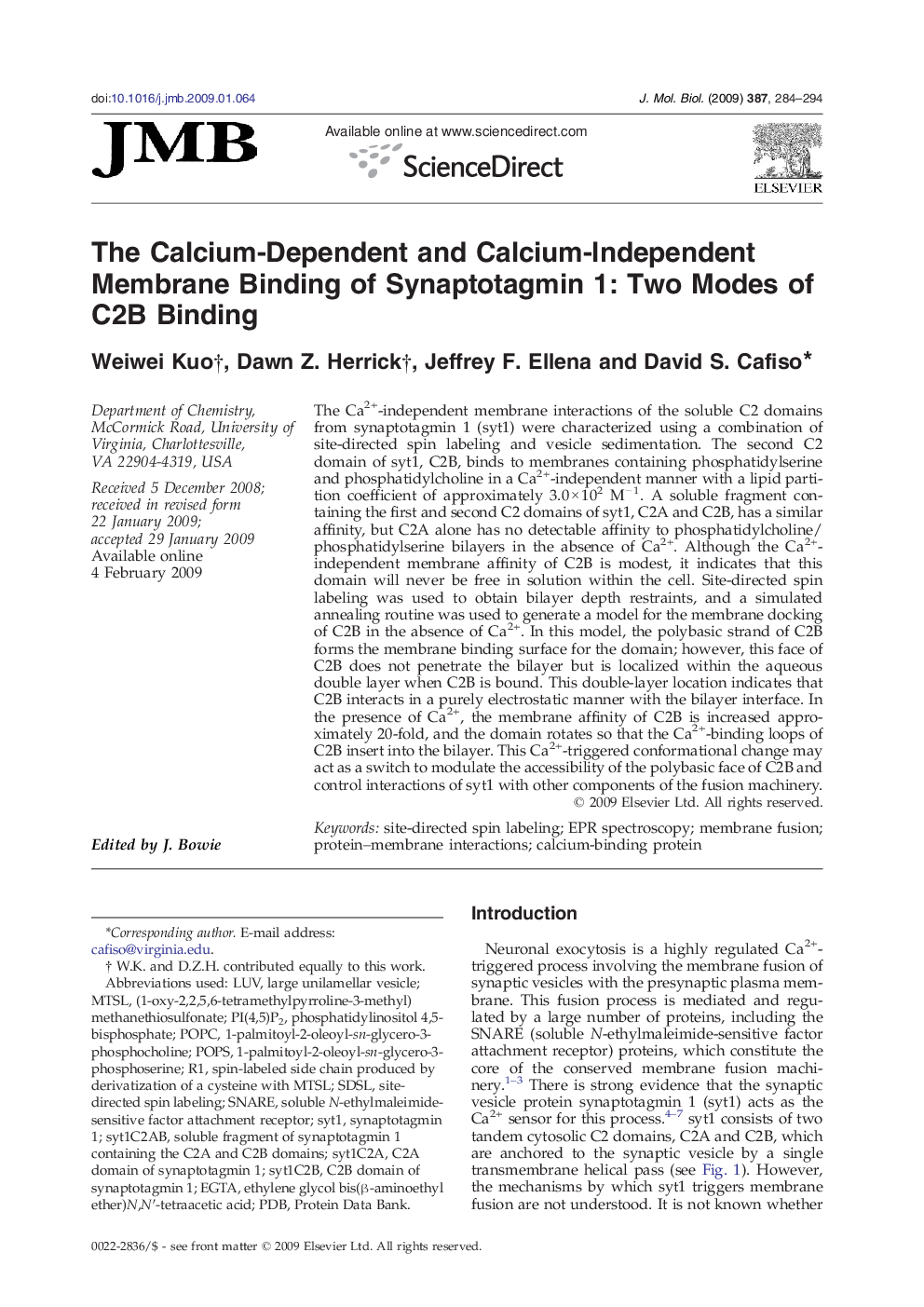| Article ID | Journal | Published Year | Pages | File Type |
|---|---|---|---|---|
| 2186593 | Journal of Molecular Biology | 2009 | 11 Pages |
The Ca2+-independent membrane interactions of the soluble C2 domains from synaptotagmin 1 (syt1) were characterized using a combination of site-directed spin labeling and vesicle sedimentation. The second C2 domain of syt1, C2B, binds to membranes containing phosphatidylserine and phosphatidylcholine in a Ca2+-independent manner with a lipid partition coefficient of approximately 3.0 × 102 M− 1. A soluble fragment containing the first and second C2 domains of syt1, C2A and C2B, has a similar affinity, but C2A alone has no detectable affinity to phosphatidylcholine/phosphatidylserine bilayers in the absence of Ca2+. Although the Ca2+-independent membrane affinity of C2B is modest, it indicates that this domain will never be free in solution within the cell. Site-directed spin labeling was used to obtain bilayer depth restraints, and a simulated annealing routine was used to generate a model for the membrane docking of C2B in the absence of Ca2+. In this model, the polybasic strand of C2B forms the membrane binding surface for the domain; however, this face of C2B does not penetrate the bilayer but is localized within the aqueous double layer when C2B is bound. This double-layer location indicates that C2B interacts in a purely electrostatic manner with the bilayer interface. In the presence of Ca2+, the membrane affinity of C2B is increased approximately 20-fold, and the domain rotates so that the Ca2+-binding loops of C2B insert into the bilayer. This Ca2+-triggered conformational change may act as a switch to modulate the accessibility of the polybasic face of C2B and control interactions of syt1 with other components of the fusion machinery.
